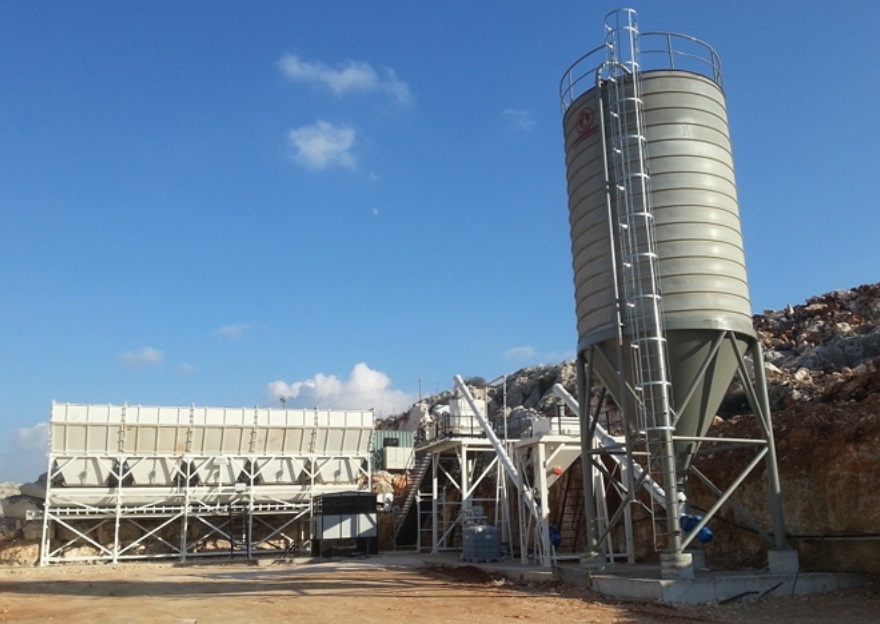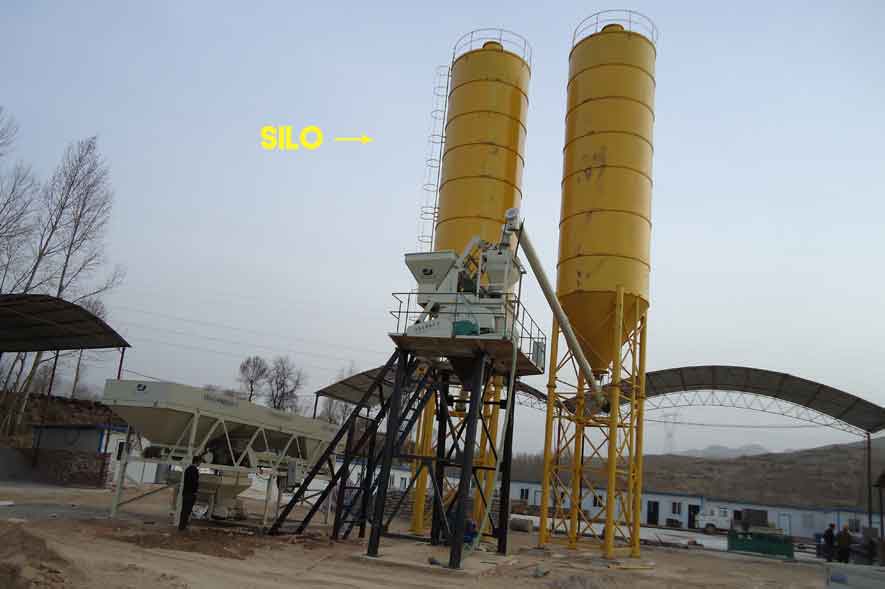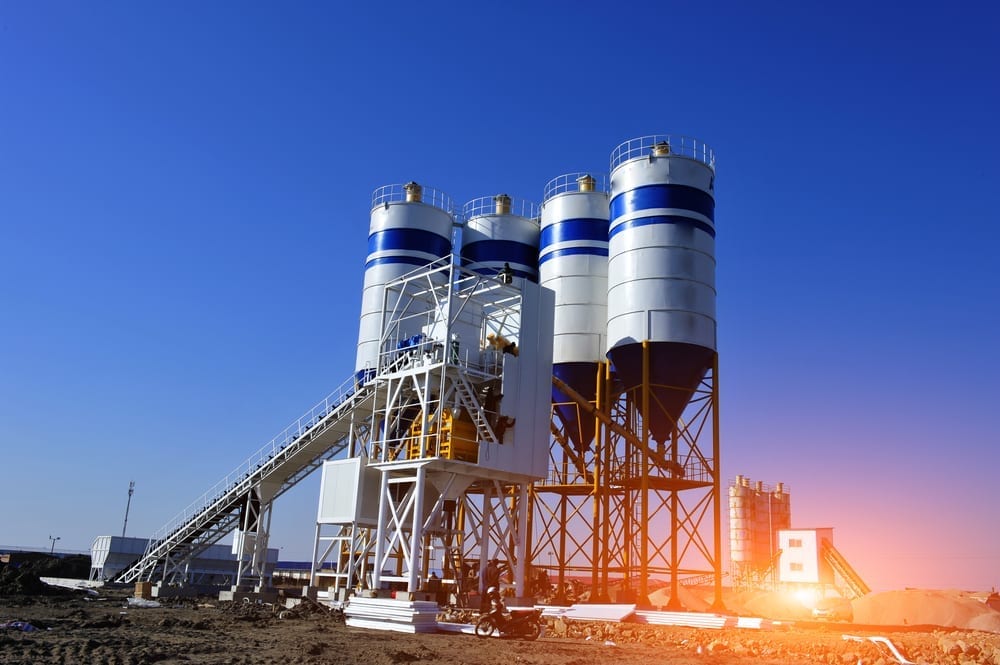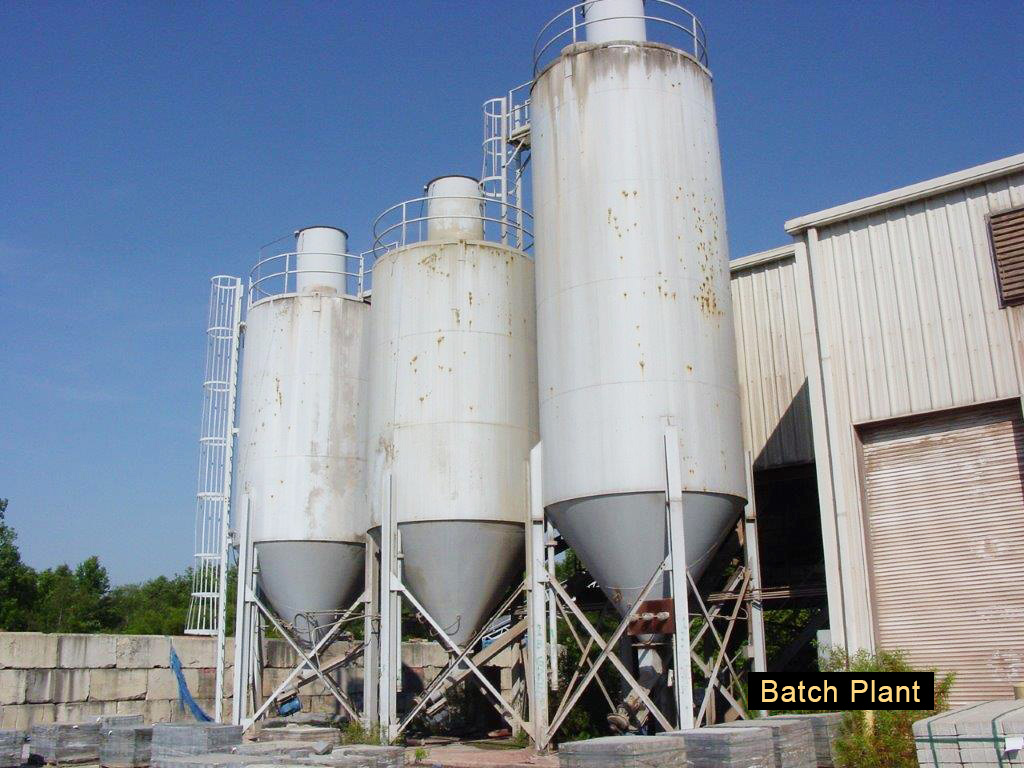Ever wondered how those towering silos at construction sites manage to hold so much material? They’re a crucial part of any batching plant, silently storing the ingredients for our roads, bridges, and buildings. But the question often arises: Just how high is a batching plant silo, anyway? The answer, as you might suspect, isn’t a simple number. It’s more like asking how tall a building is – it depends!
How High Is a Batching Plant Silo? Understanding Silo Heights
Batching plant silos are the unsung heroes of the construction world. These towering structures are essential for storing and dispensing bulk materials like cement, aggregates (sand, gravel, crushed stone), and other vital components used in concrete production. They act as giant storage containers, ensuring a steady supply of materials for continuous mixing and batching operations. Now, the million-dollar (or perhaps million-cubic-foot) question: How high is a batching plant silo? While there’s no one-size-fits-all answer, it’s safe to say they’re pretty darn tall! Silo height can vary significantly, influenced by a range of factors we’ll explore in detail. Think of it like choosing a storage container for your kitchen – you wouldn’t use a tiny jar to store a sack of potatoes, right? Similarly, silo height is carefully calculated to meet the specific needs of the batching plant.

Typical Heights of Batching Plant Silos
Let’s get down to brass tacks: just how tall are these silos, on average? While variations abound, we can talk about some common height ranges. Think of it like the difference between a single-story house and a skyscraper – both are buildings, but vastly different in height. Similarly, batching plant silos come in a variety of sizes.
Common Silo Heights: Generally, you’ll find batching plant silos ranging anywhere from 30 to 80 feet (approximately 9 to 24 meters) tall. However, don’t be surprised to see even taller silos, sometimes exceeding 100 feet (30 meters) or more, especially in large-scale operations or when dealing with high-density materials. To give you a better visual, imagine a three-story building – that’s a pretty standard silo height. Now picture a ten-story building – that’s getting into the taller range.
Variations in Silo Height: As mentioned, these are just typical ranges. A smaller batching plant with lower material demands might only need silos in the 30-50 foot range. A massive concrete production facility supplying materials for a major infrastructure project, on the other hand, could require much taller silos to accommodate the sheer volume of materials needed. It’s all about scale and demand.
Visual Aids: Imagine a row of silos, some squat and wide, others tall and slender. This visual representation highlights the diversity in silo heights. (Unfortunately, I can’t actually show you a picture here, but I encourage you to do a quick image search for “batching plant silos” to get a good sense of the variety). You’ll see that silo height isn’t just about reaching a certain level; it’s a carefully calculated decision based on a multitude of factors.

Factors Influencing Batching Plant Silo Height
So, what makes one silo tower over another? It’s not just a matter of randomly picking a height. Several key factors come into play when determining the optimal dimensions of a batching plant silo. Think of it like baking a cake – you need the right ingredients in the right proportions. Similarly, silo height is a precise calculation based on several variables.
Storage Capacity: This is the most obvious factor. The more material you need to store, the larger the silo needs to be. It’s like choosing a bigger backpack for a longer trip. A batching plant requiring a large reserve of cement, for example, will need taller silos to accommodate the volume. Conversely, a smaller operation with lower material demands can get away with shorter silos.
Material Density: Not all materials are created equal. Some are denser than others, meaning they pack more mass into the same volume. Think of feathers versus rocks – a pile of rocks will be much heavier (and require less space) than an equivalent pile of feathers. Similarly, denser materials like aggregates might require shorter, wider silos compared to lighter materials like certain types of cement.
Batching Plant Design: The overall layout and design of the batching plant itself plays a role. The location of the mixing equipment, the flow of materials, and the available space all influence silo placement and, consequently, height. It’s like designing a kitchen – you need to consider the placement of the oven, sink, and refrigerator for optimal workflow.
Site Constraints: Sometimes, the land itself dictates what’s possible. Limited space, zoning regulations, or proximity to other structures can restrict silo height. Imagine trying to build a skyscraper in a neighborhood of single-story houses – it just wouldn’t fit! Similarly, site constraints can force engineers to get creative with silo design, perhaps opting for multiple smaller silos instead of one large one.
Loading and Unloading Mechanisms: How materials get into and out of the silo is another important consideration. The type of conveyors, elevators, or other loading/unloading systems used can influence the silo’s height and overall design. Think of it like choosing the right tools for a job – a crane might be necessary for loading materials into a very tall silo.
Local Regulations and Building Codes: Last but not least, local regulations and building codes often dictate maximum silo heights. These regulations are in place to ensure safety and prevent any potential hazards. It’s like following the rules of the road – they’re there for everyone’s protection. So, before erecting a towering silo, it’s crucial to check with local authorities and obtain the necessary permits.

How to Calculate Silo Height: A Simplified Approach
Now, for the burning question: how do engineers actually calculate silo height? While the precise calculations are complex and require specialized engineering expertise, we can touch upon the basic principles involved. Think of it like understanding the basic ingredients of a recipe without necessarily being a master chef.
Basic Formula: At its core, silo height calculation revolves around the relationship between volume, material density, and the desired storage capacity. A simplified way to think about it is this: Volume = Area of the base * Height. If you know the desired volume of material you need to store and the area of the silo’s base (which is related to its diameter), you can calculate the required height. However, this is a grossly simplified explanation and doesn’t account for many crucial factors.
Importance of Professional Consultation: I cannot stress this enough: Accurate silo height calculation is a job for experienced structural engineers. There are far too many variables and complex engineering principles involved to attempt this yourself. Think of it like performing surgery – you wouldn’t try it without years of medical training, right? Similarly, silo design requires specialized knowledge and expertise.
Example Calculation (Simplified): Let’s imagine (for illustrative purposes only!) that we need to store 100 cubic meters of cement. And let’s say we’ve determined that the base area of our silo should be 10 square meters. Using our simplified formula (Volume = Area * Height), we can calculate the height: 100 cubic meters = 10 square meters * Height. Therefore, Height = 10 meters.
Important Disclaimer: This is an extremely simplified example and should not be used for actual silo design. Real-world calculations are far more complex and involve factors like material properties, wind loads, seismic activity, and more. This example is purely to illustrate the basic relationship between volume, area, and height.

Safety Considerations Related to Silo Height
With great height comes great responsibility – and significant safety considerations. Tall silos present unique challenges that demand careful planning and engineering to ensure the safety of workers and the surrounding environment. It’s not just about preventing a giant pile of cement from collapsing; it’s about protecting lives.
Structural Stability: The taller the silo, the greater the forces acting upon it. Ensuring the structural integrity of these towering structures is paramount. Engineers must meticulously calculate and design the silo to withstand the weight of the stored materials, wind loads, seismic activity, and other external forces. Think of it like building a skyscraper – the foundation and structural framework must be incredibly strong to support the immense weight.
Wind Load: Wind load increases significantly with height. A tall silo exposed to high winds can experience tremendous pressure. Imagine a sail in a strong gale – the taller the sail, the greater the force. Similarly, silos must be designed to withstand these wind loads to prevent damage or collapse.
Seismic Activity: In earthquake-prone areas, seismic activity is a critical factor in silo design. Silos must be engineered to withstand ground shaking and prevent structural failure during earthquakes. It’s like building a house on a shaky foundation – you need to take extra precautions to ensure stability.
Access and Maintenance: Reaching the top of a tall silo for inspection, maintenance, or repairs can be challenging. Safe access methods, such as ladders, platforms, or aerial lifts, are essential. Think of it like climbing a mountain – you need the right equipment and safety gear.
Fall Protection: Fall protection systems are absolutely crucial for workers at heights on silos. Harnesses, lifelines, and other fall arrest equipment must be used to prevent falls and ensure worker safety. It’s like wearing a seatbelt in a car – it’s a simple precaution that can save lives.
Dust Control: Dust control becomes increasingly important with taller silos, especially when handling materials like cement. Dust suppression systems and proper ventilation are necessary to minimize dust exposure for workers and the surrounding environment. Think of it like cleaning up sawdust after woodworking – you want to minimize the amount of dust in the air.

Batching Plant Silo Height Regulations and Permits
Building a batching plant silo isn’t as simple as just picking a spot and erecting a tall structure. There are rules and regulations in place to ensure safety and environmental protection. Think of it like building a house – you need permits and approvals before you can start construction.
Local Building Codes: Local building codes and regulations play a significant role in determining permissible silo heights. These codes often specify maximum height limits based on zoning, proximity to other structures, and other factors. It’s like checking the rules of a game before you start playing – you need to know what’s allowed and what’s not.
Environmental Regulations: In addition to building codes, environmental regulations may also apply to silo construction and operation. These regulations might address issues like dust emissions, noise pollution, and other environmental impacts. It’s like being a good neighbor – you need to be mindful of the impact your actions have on others.
Permit Requirements: Before you can even think about building a silo, you’ll likely need to obtain permits from local authorities. The permitting process typically involves submitting detailed plans, engineering calculations, and other documentation. The height of the silo is a key factor in the permitting process. It’s like applying for a driver’s license – you need to demonstrate that you’re qualified and capable. Failing to obtain the necessary permits can lead to hefty fines and even the forced demolition of the silo. So, it’s crucial to do your due diligence and navigate the regulatory landscape before you start construction.
Choosing the Right Silo Height for Your Needs
So, how do you choose the right silo height for your specific needs? It’s a balancing act, considering all the factors we’ve discussed. Think of it like choosing the right car – you need to consider your needs, budget, and driving conditions.
Balancing Factors: The optimal silo height is a compromise between storage capacity, material density, site constraints, cost, and safety considerations. There’s no magic formula, and it often requires careful analysis and trade-offs. For instance, a taller silo might offer greater storage capacity but could also increase construction costs and wind load concerns.
Consulting Experts: The best approach is to consult with experienced structural engineers and silo manufacturers. These professionals can provide valuable insights and guidance based on their expertise. They can help you assess your needs, evaluate site conditions, and design a silo that meets your specific requirements. It’s like seeking advice from a financial advisor – they can help you make informed decisions based on your individual circumstances.
Long-Term Planning: When planning silo height, it’s wise to consider future expansion needs. If you anticipate increased material demands in the future, it might be worth investing in slightly taller silos upfront to avoid costly modifications later on. It’s like planning for a growing family – you might want to buy a slightly larger house than you currently need.
How High Can a Batching Plant Silo Be? A Recap
So, we’ve reached the end of our journey into the world of batching plant silo heights. As we’ve seen, there’s no single answer to the question, “How high is a batching plant silo?” It’s a complex question with a multifaceted answer. Silo height is a carefully engineered decision, influenced by a variety of factors, from storage capacity and material density to site constraints and safety regulations. While we’ve covered the key considerations, it’s crucial to remember that professional consultation is essential for accurate silo design and construction. So, if you’re planning a batching plant or simply curious about these towering structures, remember that careful planning, expert advice, and adherence to safety regulations are paramount. Now, the next time you see a batching plant silo, you’ll have a much better understanding of the engineering marvels they truly are!